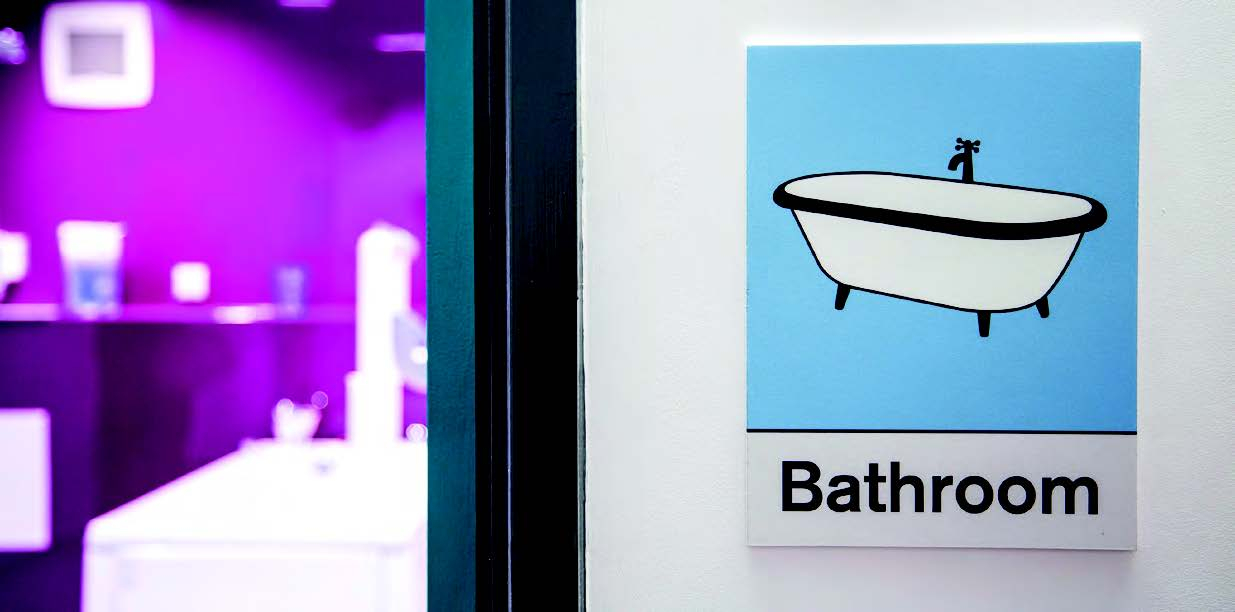
Exploring how modern signage solutions are helping to overcome navigational problems in large hospitals.
The confusing labyrinth of corridors, rooms, receptions, and waiting areas in most hospitals can be hard to navigate.
Effective wayfinding solutions are, therefore, key to creating buildings that enhance the patient experience as well as making life easier for visitors and staff.
Mike Sanders, chief executive of Intouch With Health, explains: “A visit to hospital is stressful at the best of times and poor signage and wayfinding contributes to this by creating confusion and adding extra time to a person’s journey. This then affects patient flow.
“It also creates work for already busy NHS staff as they are stopped and asked for directions regularly throughout the day.”
Solutions
Fixed static signage is still a common sight across hospitals, but now greater thought goes into the colours, wording and images used.
For example, research by Endpoint revealed that clinical terminology used on traditional signage was causing confusion. Instead, its designers advise using more common phrases for department signs such as ‘kidney’ rather than ‘renal’ and ‘blood tests’ as opposed to ‘phlebotomy’.
Simplicity and clarity
There is an argument for further simplification, for example using merely ‘Ward 1’, ‘Ward 2’ etc.
This already works in hotels, apartment blocks, and classrooms, so is ideally suited to hospitals.
Endpoint’s wayfinding design director, Alison Richings, explains: “A generic address system, where the name bears no relation to the activity, might enable users to find any department without any functional understanding of what happens at that destination.”
This more-basic approach can be seen in practice at the new Royal London Hospital, which uses a combination of signage, including a simple alpha-numerical system, for example 11a, 11b, 12a, 12b etc.
Sarah Phillips, director of Picto Sign Solutions, adds, “Key to good signage is good contrast; clear wording; no glare, reflection or shiny surfaces; and the use of upper and lower-case letters.”
In terms of look, Phillips has seen a shift away from corporate NHS signage in a few recent projects. “An example is the Rutherford Cancer Centre in Northumberland, where they wanted something much less institutional and user friendly, with a much-softer look”, she said.
Consistency
Richings points out that it is vital that names used on signage are also included in letters and emails sent to patients, otherwise they are lost once they pass through the doors.
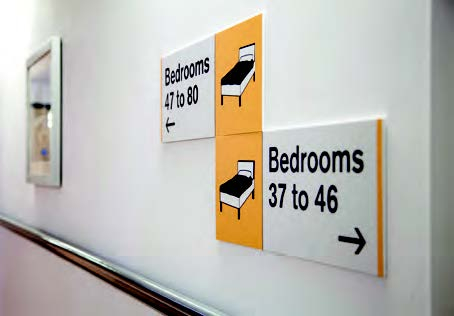
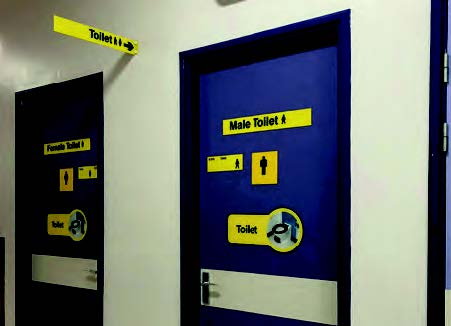
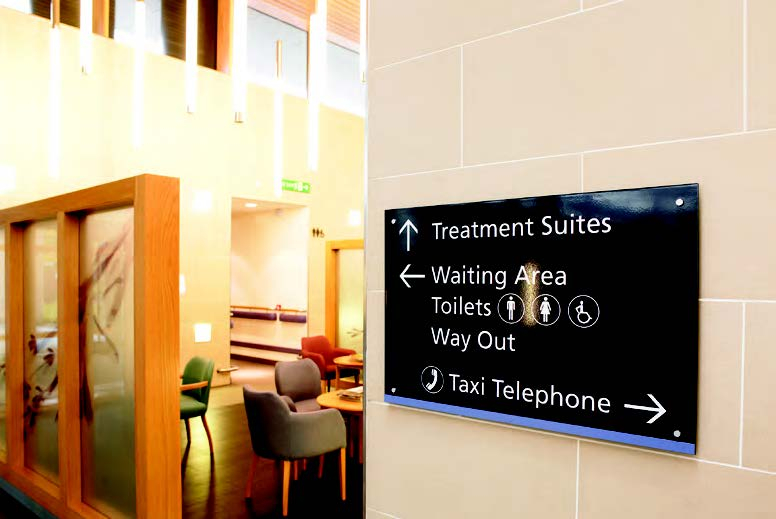
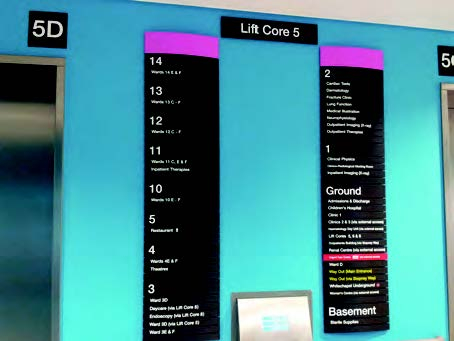
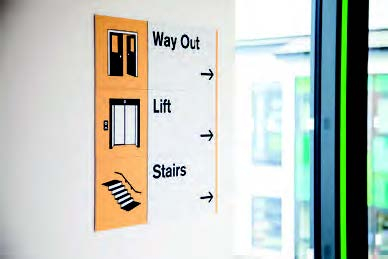
Adaptable signage
Because of the fast-changing nature of healthcare services, and the long lifespan of buildings, among the most-popular signage and wayfinding solutions are traditional fixed slat systems, where single panels can be updated and replaced as necessary.
These are available in a variety of styles, can be wall or ceiling hung, and can be supplied with a combination of images and words, making them more legible to people with certain medical conditions including dementia.
Going digital
In recent years digital wayfinding systems are beginning to make inroads into the healthcare market because static signage can be both expensive to buy, and costly to update and change.
These systems are most commonly controlled by personal computers or servers through the use of either proprietary or public-domain software programmes.
Unlike static signage, digital content can be updated frequently and, potentially, at no added cost. It offers dynamic, eye-catching content. And digital signage is often more environmentally friendly because they are designed to minimise power draw and don't require the raw materials necessary for physical, printed signs.
Sanders said: “Ideally, wayfinding systems should have some form of built-in intelligence, for example being linked to a check-in system that can identify exactly where each individual patient should be and direct them automatically to the correct location.
“There is little benefit in showing a map and directions at the entrance to the hospital, but then not having this map available throughout the person’s journey. It should be accessible either through strategically-placed wayfinding devices such as kiosks or a smartphone-type application delivered directly to their device.”
He added: “Intelligent and easy-to-use wayfinding solutions like this have taken away some of the anxiety of visiting a hospital. Our technology, for example, enables patients to view directions across multiple devices and our smartphone wayfinding uses a triangulation service to help hospital staff identify where that patient is in real time.
Future digital applications
“Future possibilities include offering the patient a map from their house to their final destination. There could be linkage to car parking, showing space availability, and perhaps even enabling parking spaces to be reserved. The options once we shift to digital are endless.”